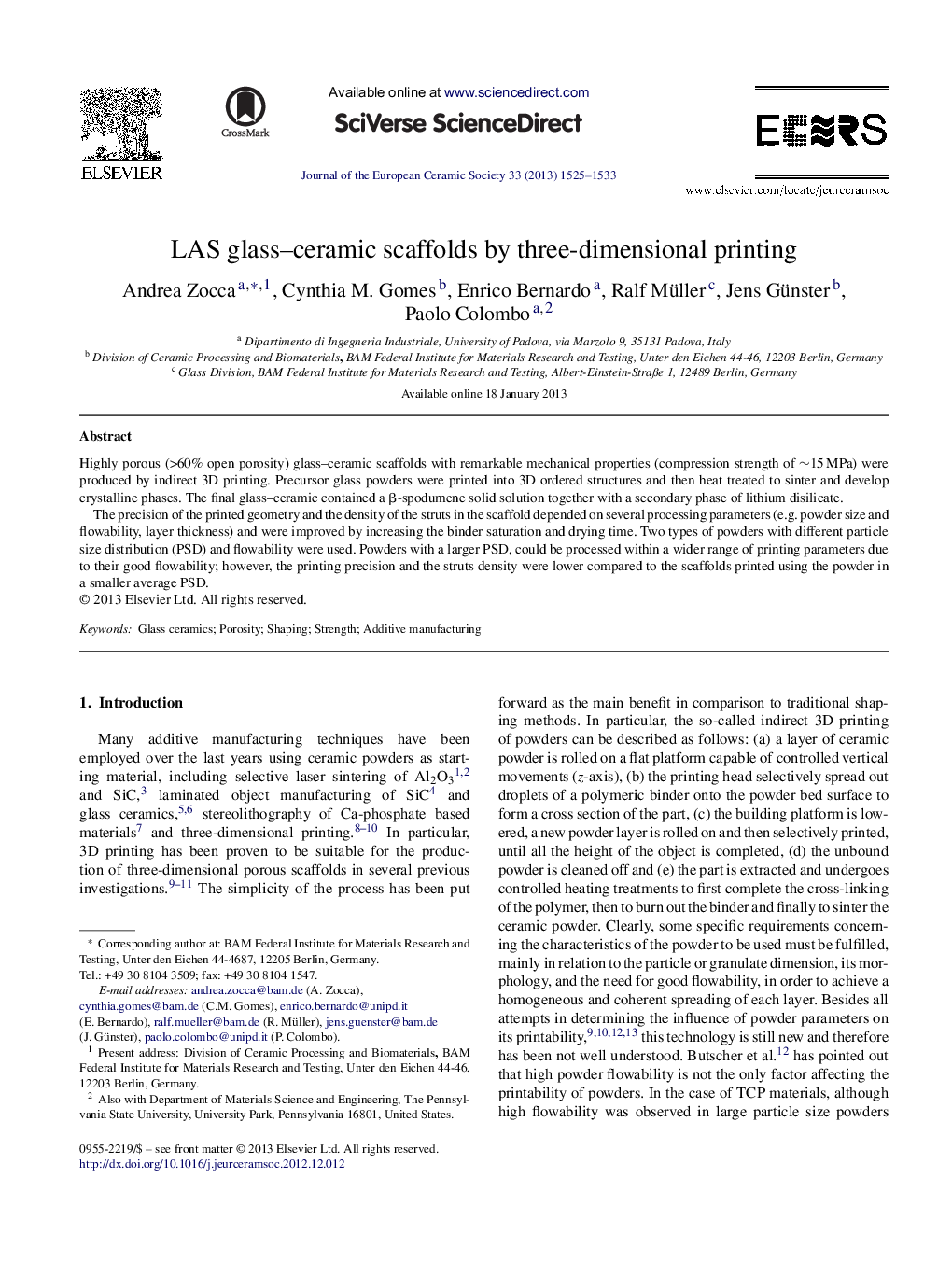| Article ID | Journal | Published Year | Pages | File Type |
|---|---|---|---|---|
| 1475577 | Journal of the European Ceramic Society | 2013 | 9 Pages |
Highly porous (>60% open porosity) glass–ceramic scaffolds with remarkable mechanical properties (compression strength of ∼15 MPa) were produced by indirect 3D printing. Precursor glass powders were printed into 3D ordered structures and then heat treated to sinter and develop crystalline phases. The final glass–ceramic contained a β-spodumene solid solution together with a secondary phase of lithium disilicate.The precision of the printed geometry and the density of the struts in the scaffold depended on several processing parameters (e.g. powder size and flowability, layer thickness) and were improved by increasing the binder saturation and drying time. Two types of powders with different particle size distribution (PSD) and flowability were used. Powders with a larger PSD, could be processed within a wider range of printing parameters due to their good flowability; however, the printing precision and the struts density were lower compared to the scaffolds printed using the powder in a smaller average PSD.
